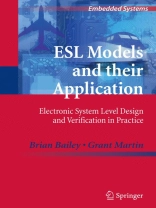This book arises from experience the authors have gained from years of work as industry practitioners in the field of Electronic System Level design (ESL). At the heart of all things related to Electronic Design Automation (EDA), the core issue is one of models: what are the models used for, what should the models contain, and how should they be written and distributed. Issues such as interoperability and tool transportability become central factors that may decide which ones are successful and those that cannot get sufficient traction in the industry to survive.
Through a set of real examples taken from recent industry experience, this book will distill the state of the art in terms of System-Level Design models and provide practical guidance to readers that can be put into use. This book is an invaluable tool that will aid readers in their own designs, reduce risk in development projects, expand the scope of design projects, and improve developmental processes and project planning.
表中的内容
IP Meta-Models for So C Assembly and HW/SW Interfaces.- Functional Models.- Testbench Models.- Virtual Prototypes and Mixed Abstraction Modeling.- Processor-Centric Design: Processors, Multi-Processors, and Software.- Codesign Experiences Based on a Virtual Platform.- Transaction-Level Platform Creation.- C/C++ Hardware Design for the Real World.












